- Care for Currants After Fruiting
- Three Important Actions to Restore the Bush!
- 1. Prune the Currant Bush
- 2. Fertilize the Bush
- 3. Mulch and Water the Bush
- Pruning
- 1. Remove the Old Wood
- 2. Thin Out Overcrowded Branches
- 3. Cut Back Long and Leggy Branches
- Trimming Overgrown Branches for Optimal Growth
- Feeding
- 1. Organic fertilizers
- 2. Balanced NPK fertilizers
- 3. Foliar feeding
- Providing Essential Nutrients for Healthy Currant Bushes
- 1. Fertilize
- 2. Mulch
- 3. Prune
- Mulching
- Insulating the Soil and Preventing Weed Growth
- Insulating the Soil
- Preventing Weed Growth
- Pest Control
- Maintaining a Pest-Free Environment for Currant Bushes
- 1. Regular Inspection
- 2. Proper Sanitation
- 3. Targeted Pest Control
- Question-answer:
- What should I do with my currant bushes after they are done fruiting?
- When is the best time to prune currant bushes after fruiting?
- Why is it important to thin out the currant bush after fruiting?
- What should I do with the branches that I prune from my currant bush?
- What type of fertilizer should I use on my currant bush after fruiting?
- Can I still prune my currant bushes if they have already started producing new growth?
- Do I need to water my currant bushes after fruiting?
- Video: All About Growing Currants: Harvest & Growing Tips
After a fruitful harvest, it’s important to give your currant bushes the care they need to restore and prepare for the next season. Currants are hardy plants, but they still require some attention to ensure their health and productivity.
The first important action for caring for currants after fruiting is pruning. Pruning helps to maintain the shape of the bush, control its size, and stimulate new growth. Start by removing any dead, damaged, or diseased branches. Then, thin out the center of the bush to improve air circulation and light penetration. Finally, shorten the remaining branches by about a third to encourage the growth of new fruiting wood.
The second important action is fertilizing. Currants are heavy feeders and benefit from regular feeding to replenish nutrients in the soil. Apply a balanced fertilizer, such as 10-10-10, in early spring after pruning. Spread the fertilizer evenly around the base of the bush, being careful not to let it touch the stems. Water the area thoroughly to help the fertilizer penetrate the soil.
Finally, the third important action is mulching. Mulching helps to retain moisture, suppress weeds, and regulate soil temperature. Apply a layer of organic mulch, such as shredded leaves or wood chips, around the base of the bush, being careful to leave a gap around the stem to prevent rot. Keep the mulch layer about 2-3 inches thick.
By following these three important actions – pruning, fertilizing, and mulching – you can provide the necessary care for your currant bushes after fruiting. This will help ensure their health, vigor, and productivity for the next growing season!
Care for Currants After Fruiting
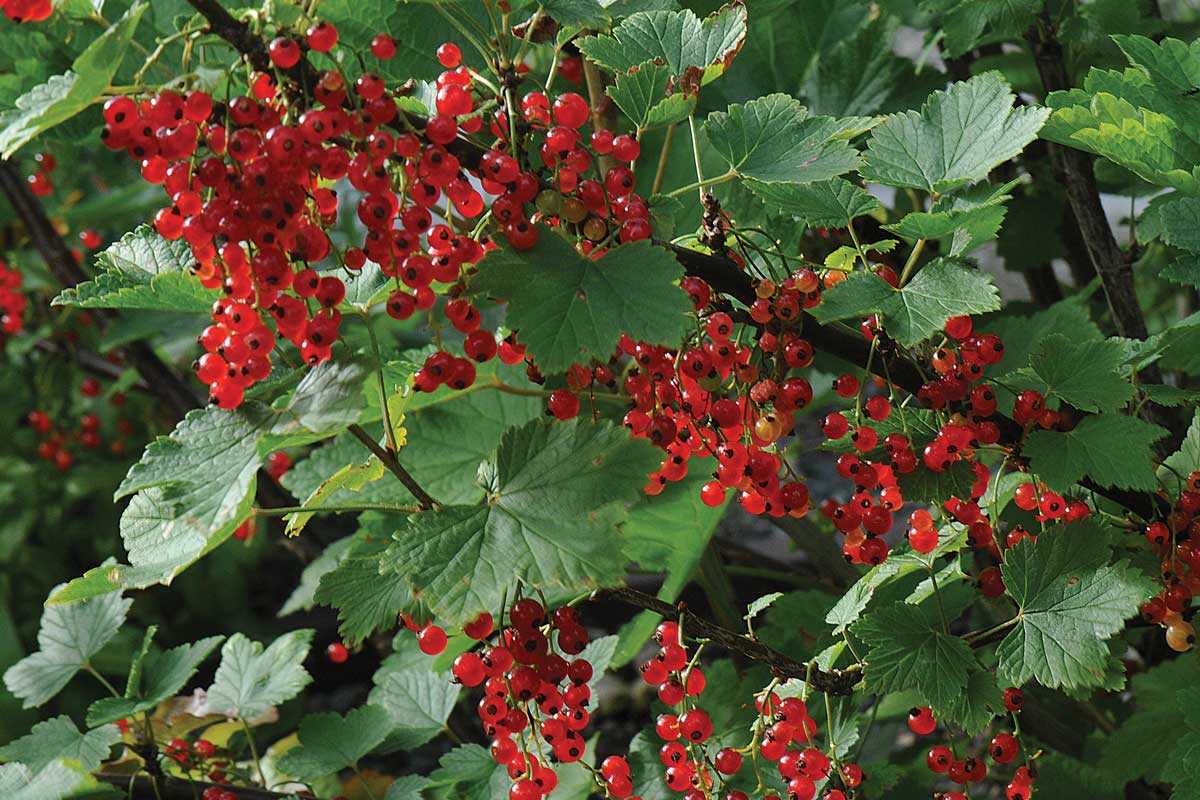
- Pruning: One important action to take care of currants after fruiting is pruning. Pruning helps to maintain the shape and size of the bush and promotes new growth for the next season. It is recommended to prune currant bushes in late winter or early spring before new growth appears. Remove any dead, diseased, or damaged branches by cutting them at the base. Thin out the center of the bush to improve air circulation and sunlight penetration. Prune back about one-third of the oldest wood to encourage new shoots.
- Fertilizing: After fruiting, currant bushes need proper nutrients to replenish their energy reserves and support next year’s growth. Apply a balanced fertilizer, such as a 10-10-10 or 14-14-14 formula, around the base of the bushes. Follow the recommended dosage instructions on the fertilizer package. Avoid applying fertilizer directly to the foliage or stems, as it may cause burning. Water the bushes thoroughly after fertilizing to help the nutrients penetrate the soil.
- Mulching: Mulching is another important action to care for currants after fruiting. Mulch helps to conserve moisture, suppress weeds, and regulate soil temperature. Apply a layer of organic mulch, such as straw, wood chips, or compost, around the base of the bushes. Make sure to leave a gap around the stems to prevent rotting. Mulch should be applied to a depth of 2-4 inches. Replenish the mulch annually in the spring to maintain its effectiveness.
By taking these three important actions – pruning, fertilizing, and mulching – you can ensure that your currant bushes stay healthy and productive after fruiting. Regular care will help to maintain the vitality of the bushes and improve fruit yield in the following seasons.
Three Important Actions to Restore the Bush!
1. Prune the Currant Bush
To restore the currant bush after it has fruited, pruning is essential. Pruning helps remove old and dead wood, promotes new growth, and improves air circulation within the bush. Follow these steps:
- Start by removing any dead branches or those that are crossing and rubbing against each other.
- Next, thin out some of the older wood to encourage new shoots to grow.
- Cut back the remaining branches by one-third to one-half their length.
- Make clean cuts just above an outward-facing bud or shoot.
Remember to use sharp pruning shears or loppers to make clean cuts and avoid damaging the healthy parts of the bush.
2. Fertilize the Bush
After pruning, it’s important to fertilize the currant bush to provide it with the necessary nutrients. Choose a balanced fertilizer, such as a 10-10-10 formula, and follow these steps:
- Apply the fertilizer around the base of the bush, avoiding direct contact with the stems.
- Use approximately 1/4 to 1/2 cup of fertilizer per bush, or follow the instructions on the packaging.
- Gently work the fertilizer into the soil using a rake or hand cultivator.
- Water the bush thoroughly to help the fertilizer dissolve and reach the roots.
Regular fertilization throughout the growing season will help the currant bush regain its strength and produce healthier fruit the following year.
3. Mulch and Water the Bush
Mulching and proper watering are crucial for restoring the currant bush and maintaining its health. Follow these guidelines:
- Apply a layer of organic mulch, such as wood chips or compost, around the base of the bush.
- The mulch should be about 2-3 inches deep and extend a few inches beyond the outermost branches.
- This will help conserve moisture, regulate soil temperature, and suppress weed growth.
- Water the bush deeply and regularly, especially during dry spells, to keep the soil consistently moist but not waterlogged.
- Aim for about 1-2 inches of water per week, either through rainfall or supplemental watering.
By providing adequate moisture and mulching, you’ll create a favorable environment for the currant bush to recover and thrive. Regularly monitor the moisture level and adjust watering accordingly.
Conclusion: Taking these three important actions – pruning, fertilizing, and providing proper care – will help restore your currant bush after fruiting and ensure its continued productivity in the future. With a little attention and effort, your currant bush will thrive and reward you with an abundance of delicious fruits!
Pruning
Pruning is an important action that should be taken after fruiting to maintain the health and productivity of currant bushes. Here are three key pruning tasks to consider:
1. Remove the Old Wood
One essential pruning task is to remove the old wood from the currant bush. Old wood refers to the branches that have already fruited and are no longer productive. These branches can be identified by their darker color and brittle texture.
To remove the old wood, use a sharp pruning shears or a pruning saw to cut the branches close to the main stem. Make sure to make clean, angled cuts to promote healing and prevent disease entry points.
2. Thin Out Overcrowded Branches
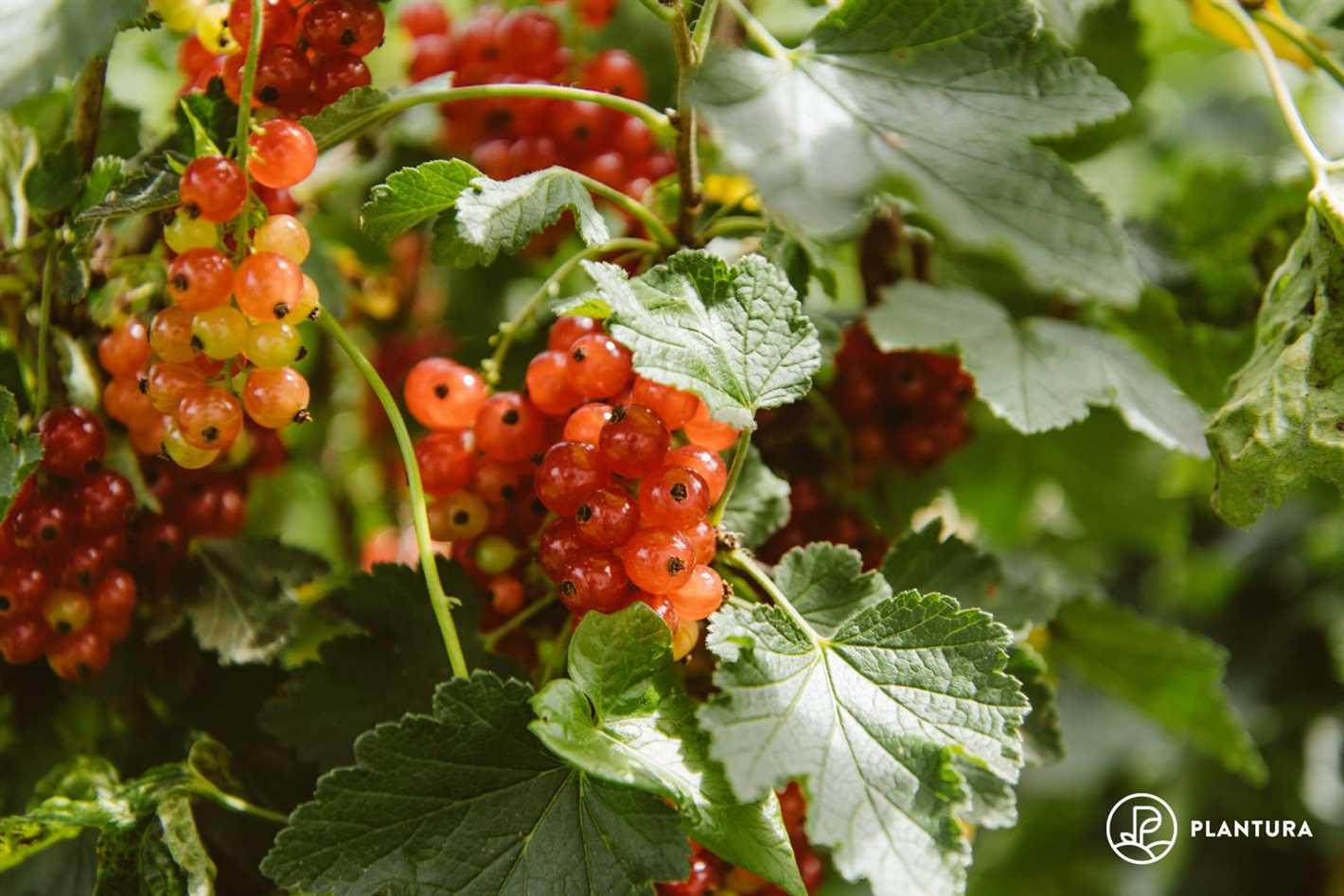
Over time, currant bushes can become overcrowded with branches, which can lead to reduced air circulation and increased risk of diseases. To prevent this, thin out the branches by removing some of the weaker and crossing branches.
Start by identifying the branches that are overcrowded or rubbing against each other. Then, use pruning shears to remove these branches back to the main stem or a lateral branch. Aim to create an open and airy canopy for the currant bush to thrive.
3. Cut Back Long and Leggy Branches
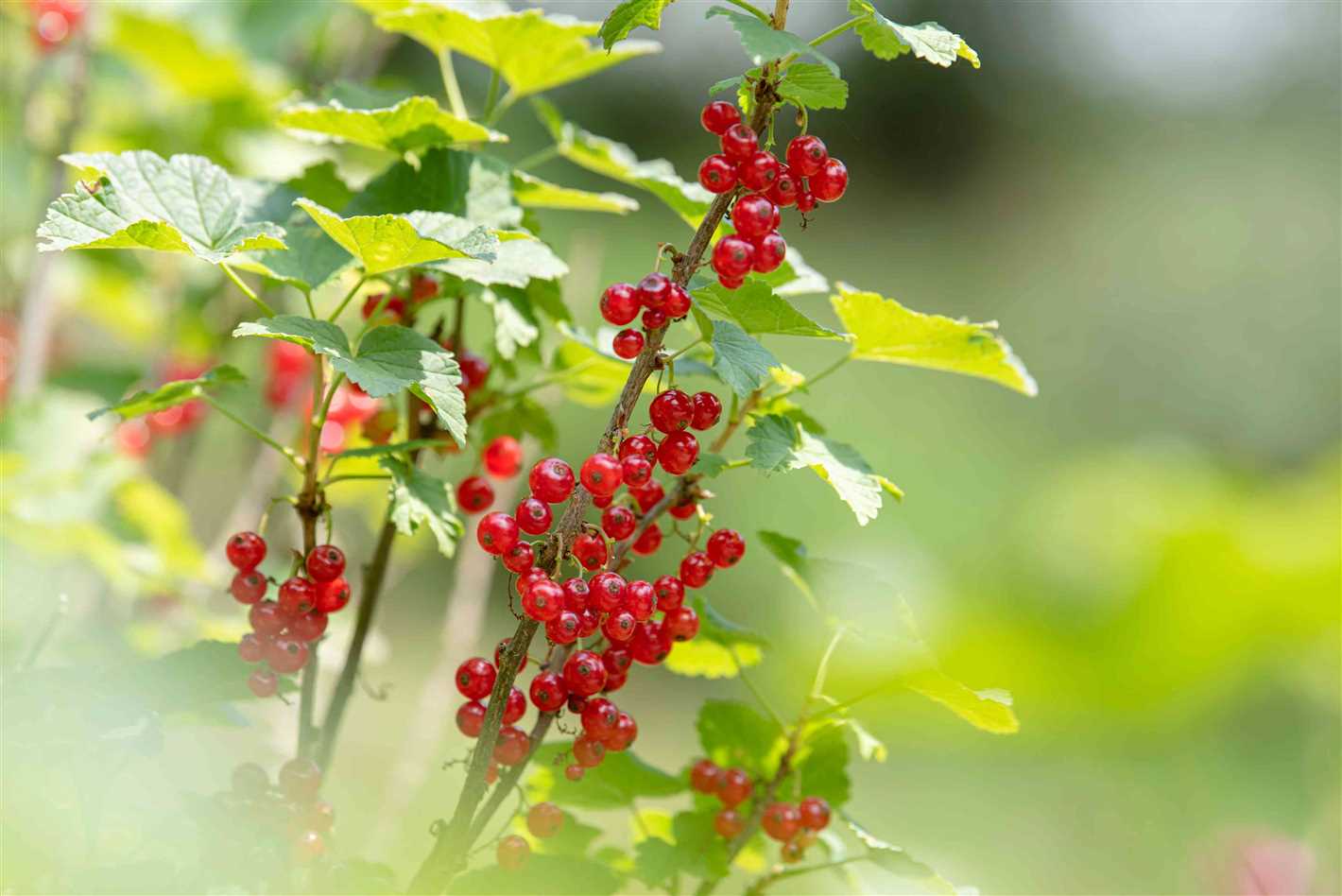
Long and leggy branches not only take up space but also tend to produce fewer fruits. To rejuvenate the currant bush and encourage new growth, cut back these long and leggy branches.
Identify the branches that have grown excessively long and cut them back by about one-third to one-half of their length. This will stimulate the growth of new shoots and result in a more compact and productive currant bush.
Remember to always clean your pruning tools between cuts to prevent the spread of diseases. Additionally, prune your currant bushes during the dormant season, preferably in late winter or early spring.
Trimming Overgrown Branches for Optimal Growth
Trimming overgrown branches is an essential step in caring for currant bushes after fruiting to ensure optimal growth and productivity. Here are three important actions to take when trimming overgrown branches:
- Assess the bush: Before starting the trimming process, carefully examine the currant bush to identify which branches need to be pruned. Look for branches that are crossing or rubbing against each other, as well as those that are dead, damaged, or diseased.
- Prune properly: When pruning overgrown branches, it is important to use the correct technique. Start by removing any dead or diseased branches at their base. Then, thin out the remaining branches by cutting back a portion of the oldest and largest branches. This will help improve airflow and sunlight penetration, promoting healthier growth and reducing the risk of disease. Make sure to prune just above a bud or node to encourage new growth.
- Support the bush: After pruning, it is important to provide support for the currant bush to help it recover and grow properly. Use stakes or trellises to support the main branches and prevent them from bending or breaking under the weight of future fruit. Secure the branches gently with soft ties or twine, being careful not to tie them too tightly.
By trimming overgrown branches properly, you can help restore the health and vitality of your currant bush, ensuring optimal growth and productivity in the future.
Feeding
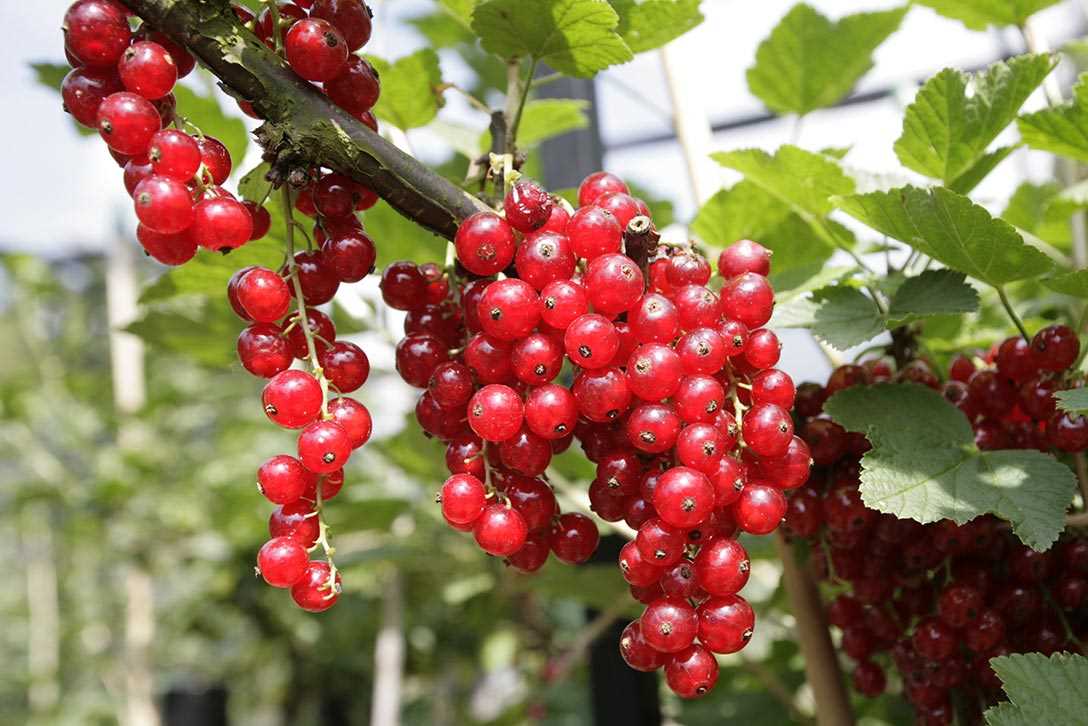
Feeding is an essential aspect of caring for currant bushes after fruiting. It is important to replenish the nutrients in the soil to ensure the health and productivity of the plants.
1. Organic fertilizers
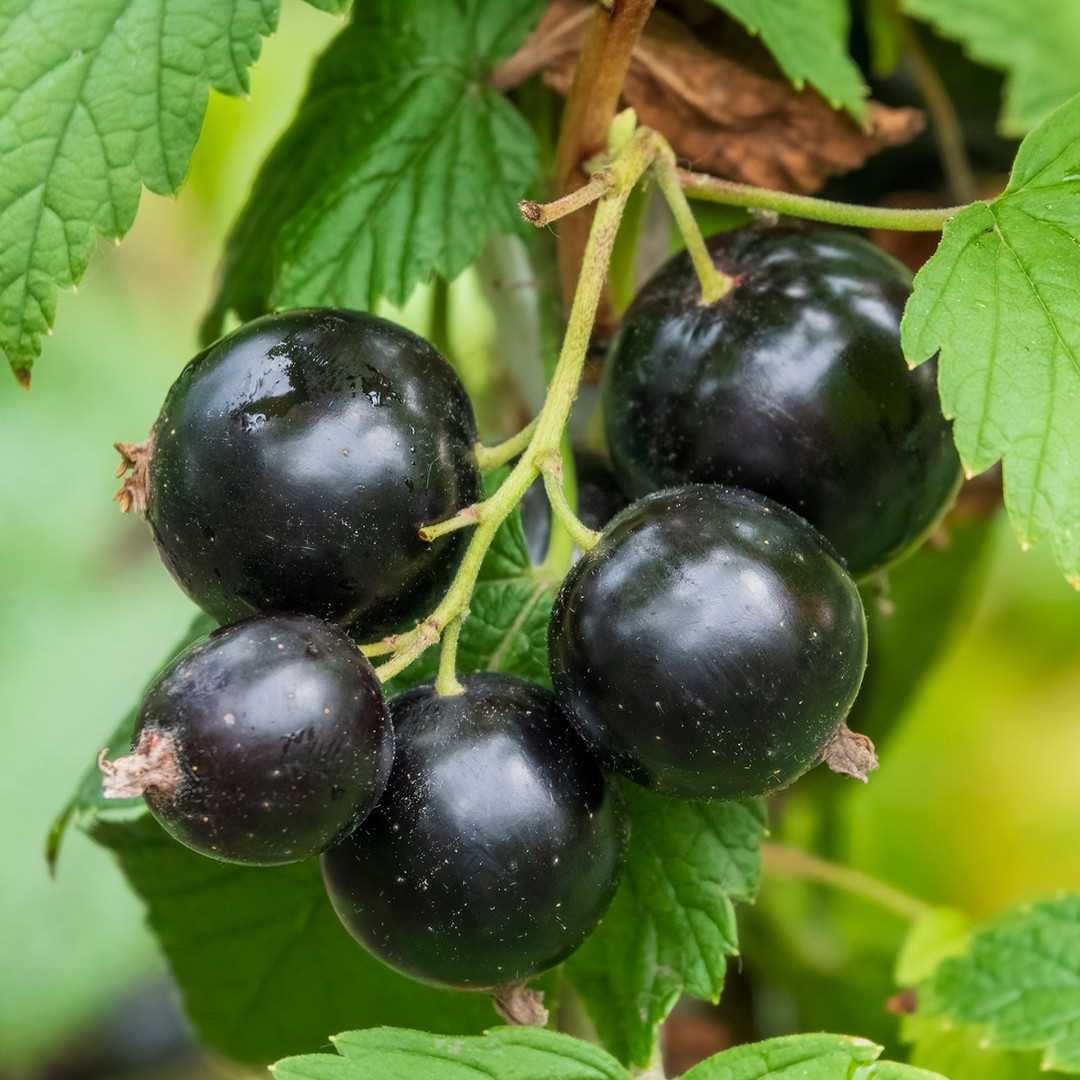
One method of feeding currant bushes is by using organic fertilizers. These fertilizers are derived from natural sources and provide a slow-release of nutrients to the plants. Organic fertilizers, such as compost, well-rotted manure, and bone meal, can be applied around the base of the bushes. This will help improve the soil structure and nutrient content, promoting healthy growth.
2. Balanced NPK fertilizers
In addition to organic fertilizers, balanced NPK fertilizers can also be used to feed currant bushes. These fertilizers contain a blend of nitrogen (N), phosphorus (P), and potassium (K). Nitrogen promotes leaf and stem growth, phosphorus supports root development and flowering, while potassium helps with overall plant health and fruit production. It is important to follow the instructions on the fertilizer packaging and apply it evenly around the bushes.
3. Foliar feeding
Foliar feeding is another feeding method that can be used for currant bushes. This involves spraying a liquid fertilizer directly onto the leaves of the plants. This allows the plants to absorb the nutrients more quickly and efficiently. Foliar feeding can be done with a balanced liquid fertilizer or a diluted solution of compost tea. It is best to perform foliar feeding in the early morning or late afternoon to avoid scorching the leaves in direct sunlight.
By providing the necessary nutrients through feeding, currant bushes can recover from fruiting and continue to thrive. Regular feeding will help promote healthy growth, increase fruit yield, and ensure the long-term vitality of the plants.
Providing Essential Nutrients for Healthy Currant Bushes
After currants have finished fruiting, it is important to provide them with essential nutrients to ensure their healthy growth and productivity. Here are three important actions to consider:
1. Fertilize
Applying fertilizer to the soil around the currant bushes is crucial for providing essential nutrients. Choose a balanced fertilizer with equal amounts of nitrogen, phosphorus, and potassium (NPK). Apply the fertilizer according to the manufacturer’s instructions, usually in early spring or late winter before new growth starts. This will provide the bushes with the necessary nutrients to support healthy foliage and fruit production.
2. Mulch
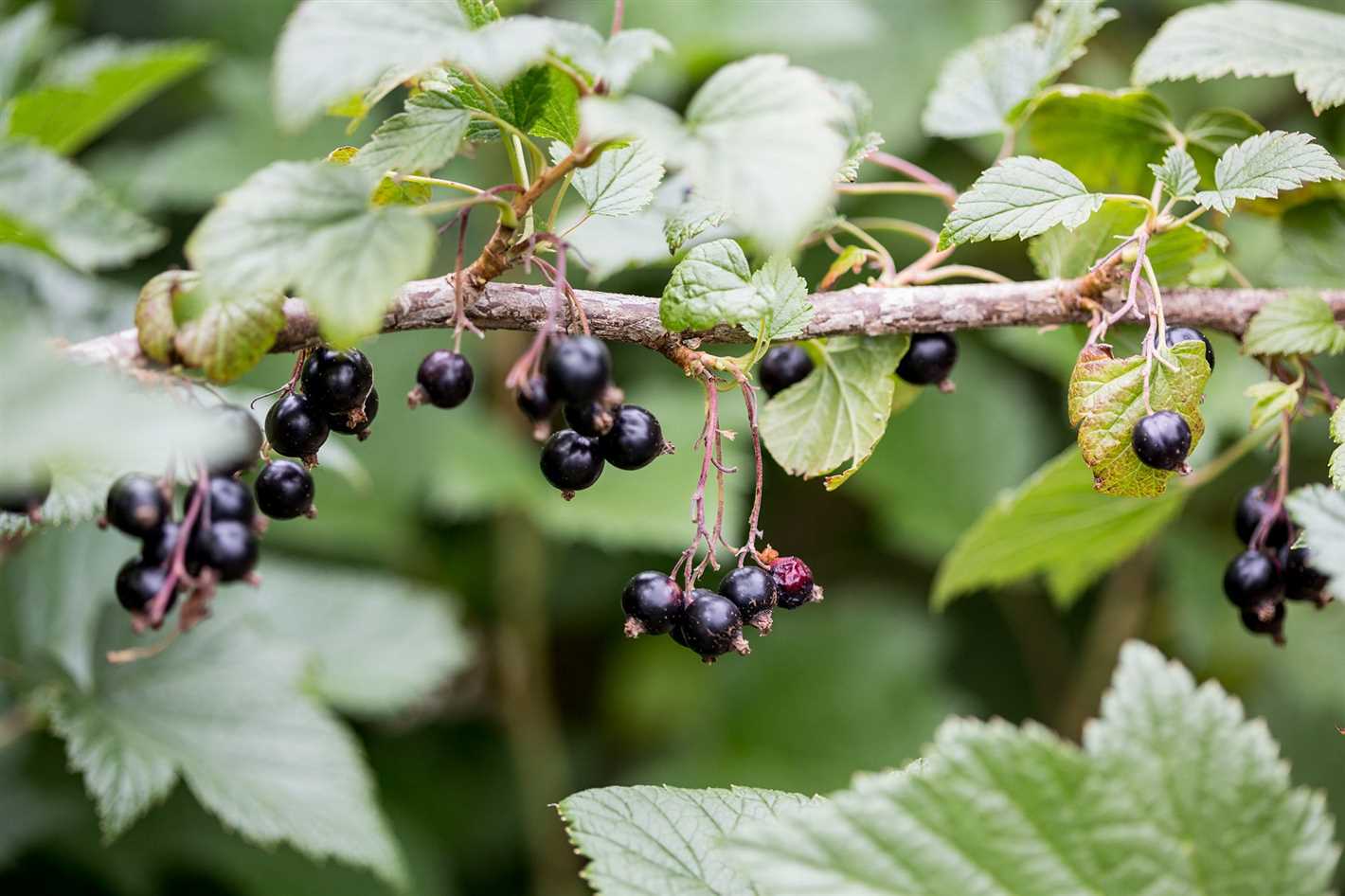
Adding a layer of organic mulch around the base of the currant bushes helps retain moisture and suppresses weed growth. Use materials such as wood chips, straw, or compost, and spread them around the plants to a depth of 2-3 inches. Mulching also helps to improve soil fertility over time, as the organic material breaks down and adds nutrients to the soil.
3. Prune
Regular pruning is essential for maintaining the health and shape of currant bushes. Prune any dead, damaged, or crossing branches to increase airflow and prevent diseases. Additionally, remove any old or weak canes that have already fruited to stimulate new growth. Pruning should be done in late winter or early spring before the buds break dormancy.
By following these three important actions – fertilizing, mulching, and pruning – you can provide your currant bushes with the essential nutrients they need for healthy growth and a bountiful harvest. Remember to always water the bushes regularly, especially during dry spells, and monitor for any signs of pests or diseases.
Mulching
To help restore your currant bush after fruiting, mulching is an important action to take. Mulching involves covering the soil around the base of the bush with organic material, such as compost or straw. This has several benefits for the bush and the soil:
- Mulching helps retain moisture in the soil, preventing it from drying out quickly. Currant bushes require consistent moisture, especially during the growing season, so mulching helps to ensure they have access to the water they need.
- The organic material used for mulching slowly breaks down over time, enriching the soil with nutrients. This helps to improve the overall health and fertility of the soil, which in turn benefits the currant bush.
- Mulching also helps to suppress weeds, reducing competition for resources like water and nutrients. By keeping the area around the currant bush weed-free, the bush will have an easier time accessing the resources it needs to grow and produce fruit.
When mulching your currant bush, make sure to follow these steps:
- Clean the area around the base of the bush by removing any weeds or debris.
- Apply a layer of organic material, such as compost or straw, around the base of the bush. Aim for a thickness of about 2-4 inches.
- Spread the mulch evenly, making sure to cover the soil completely around the base of the bush. Avoid piling the mulch directly against the stem of the bush, as this can lead to moisture retention and potential rotting.
- Leave a small gap between the mulch and the stem of the bush to allow for air circulation.
- Check the mulch periodically and replenish it as needed to maintain the desired thickness.
By mulching your currant bush after fruiting, you are providing it with the necessary moisture, nutrients, and weed suppression to help it recover and prepare for the next growing season.
Insulating the Soil and Preventing Weed Growth
After the fruiting period, it is essential to take proper care of your currant bush to ensure its health and productivity in the upcoming season. One crucial step in caring for currants is insulating the soil and preventing weed growth.
Insulating the Soil
Insulating the soil around your currant bush helps protect it from extreme temperature fluctuations and keeps the roots insulated during the winter months. It is especially important if you live in an area with harsh winters.
To insulate the soil, follow these steps:
- Start by removing any existing weeds or grass around the base of the bush.
- Apply a layer of organic mulch, such as straw or wood chips, around the base of the bush. Make sure the mulch is about 2-3 inches thick.
- Spread the mulch evenly in a circle around the base, extending it out to cover the entire root zone.
- Avoid piling the mulch directly against the stem of the bush to prevent rot and disease.
- Water the mulch thoroughly to help it settle and provide moisture to the soil.
Preventing Weed Growth
Weed growth can compete with currant bushes for nutrients and water, leading to reduced productivity. To prevent weed growth, follow these steps:
- Regularly inspect the area around the currant bush for any signs of weed growth.
- Use manual methods, such as hand-pulling weeds or using a hoe, to remove them before they establish deep roots.
- Apply a layer of mulch around the base of the bush to suppress weed growth.
- Consider using weed barriers, such as landscape fabric, to prevent weed seeds from germinating and growing.
- Avoid using chemical herbicides near the currant bush, as they can harm the plant.
By insulating the soil and preventing weed growth, you create a favorable environment for your currant bush to grow and thrive. These simple actions will help ensure a healthy and productive harvest in the future.
Pest Control
- Monitor for pests: Regularly inspect the currant bush for any signs of pest infestation. Common pests that can affect currants include aphids, mites, caterpillars, and sawflies. Look for visible pests, damaged leaves, or curled leaves that may indicate the presence of pests.
- Remove pests manually: If you spot any pests on the currant bush, take immediate action to remove them. You can do this by handpicking the pests or by using a soft brush to sweep them off the leaves. Be sure to dispose of the pests away from the currant bush to prevent reinfestation.
- Use organic pest control methods: To control pests on your currant bush in an environmentally friendly way, consider using organic pest control methods. These can include applying neem oil, insecticidal soap, or using natural predators like ladybugs or lacewings to help control pest populations. Be sure to follow the instructions on the product labels when using any pest control products.
- Prune infected branches: If you notice that pests have heavily infested certain branches of the currant bush, it may be necessary to prune those branches. This will not only remove the pests but also prevent the spread of infestation to other parts of the bush. Ensure that you use clean and sharp pruning tools to prevent the spread of disease.
- Maintain overall garden cleanliness: Keeping your garden clean and well-maintained can help prevent pest infestations on your currant bush. Remove any fallen leaves or debris from around the bush, as pests can use them as hiding places. Additionally, avoid overwatering as excess moisture can attract pests.
- Encourage beneficial insects: To naturally control pest populations, create an environment that attracts beneficial insects like ladybugs, lacewings, and hoverflies. Planting flowers such as marigolds or alyssum can help attract these beneficial insects to your garden. They will feed on the pests and help keep their populations in check.
Maintaining a Pest-Free Environment for Currant Bushes
Pests can cause significant damage to currant bushes, affecting both the quality and quantity of the fruit produced. To maintain a pest-free environment for your currant bushes, it is important to implement proactive measures such as regular inspection, proper sanitation, and targeted pest control.
1. Regular Inspection
Regularly inspect your currant bushes to identify any signs of pests or diseases. Look for damaged leaves, wilted or discolored foliage, and insect activity. Pests commonly found on currant bushes include aphids, currant fruit flies, leafhoppers, and spider mites.
- Aphids: These small insects suck the sap from the leaves, causing curling, stunted growth, and the presence of sticky honeydew.
- Currant fruit flies: Their larvae feed on the fruits, leading to premature dropping and infestation.
- Leafhoppers: They cause yellowing and curling of the leaves as they feed on the plant sap.
- Spider mites: These tiny pests create webbing on the leaves and cause discoloration and browning.
Tip: Early detection of pests can prevent an infestation from spreading and causing extensive damage.
2. Proper Sanitation
Maintaining proper sanitation practices can help eliminate potential breeding grounds for pests.
- Remove fallen leaves and debris: Fallen leaves and other plant debris provide hiding places for pests. Regularly clean up the area around your currant bushes to reduce pest populations.
- Prune affected branches: If you notice any branches with signs of pest infestations or diseases, promptly prune them and dispose of them properly.
- Clean tools and equipment: After working with your currant bushes, clean your tools and equipment to prevent the spread of pests or diseases.
3. Targeted Pest Control
If you notice a significant pest infestation on your currant bushes, you may need to implement targeted pest control methods.
- Natural predators: Encouraging natural predators such as ladybugs and lacewings can help control aphid populations.
- Physical barriers: Placing netting or mesh around your currant bushes can prevent fruit flies and birds from accessing the fruits.
- Organic insecticides: If necessary, use organic insecticides specifically formulated for currant bushes, following the instructions carefully.
Note: Always use pest control methods in a responsible and environmentally friendly manner.
By implementing regular inspection, proper sanitation, and targeted pest control, you can maintain a pest-free environment for your currant bushes and ensure a healthy crop of delicious fruit.
Question-answer:
What should I do with my currant bushes after they are done fruiting?
After fruiting, it is important to take three important actions to restore the currant bush. Firstly, prune any dead, damaged or diseased branches. Secondly, thin out the bush by removing some of the older branches to allow more sunlight to reach the remaining branches. Finally, give the bush a good feeding of fertilizer to replenish nutrients.
When is the best time to prune currant bushes after fruiting?
The best time to prune currant bushes is immediately after fruiting, typically in late summer or early fall. Pruning at this time allows for new growth to develop before winter, ensuring a healthy and fruitful bush in the following year.
Why is it important to thin out the currant bush after fruiting?
Thinning out the currant bush after fruiting is important because it allows more sunlight to reach the remaining branches. This promotes better air circulation and helps prevent diseases. Additionally, thinning out the bush allows new growth to develop and rejuvenates the overall health of the plant.
What should I do with the branches that I prune from my currant bush?
After pruning branches from the currant bush, it is best to remove them from the area to prevent the spread of diseases or pests. You can either dispose of them in the yard waste or compost bin, or use them for mulch in your garden.
What type of fertilizer should I use on my currant bush after fruiting?
After fruiting, it is recommended to use a balanced fertilizer that is high in nitrogen. This will help replenish the nutrients in the soil and promote healthy growth. You can find specifically formulated fertilizers for berry bushes at your local gardening store.
Can I still prune my currant bushes if they have already started producing new growth?
Yes, you can still prune your currant bushes even if they have already started producing new growth. However, it is best to be selective and avoid cutting off too much new growth. Focus on removing dead, damaged, or diseased branches, as well as thinning out the overall bush to allow for better sunlight and air circulation.
Do I need to water my currant bushes after fruiting?
After fruiting, it is important to provide adequate water to your currant bushes. While they may not require as much water as during the fruiting season, it is still important to keep the soil moist. Water deeply and regularly, especially during periods of dry weather, to ensure the bushes stay healthy and hydrated.







